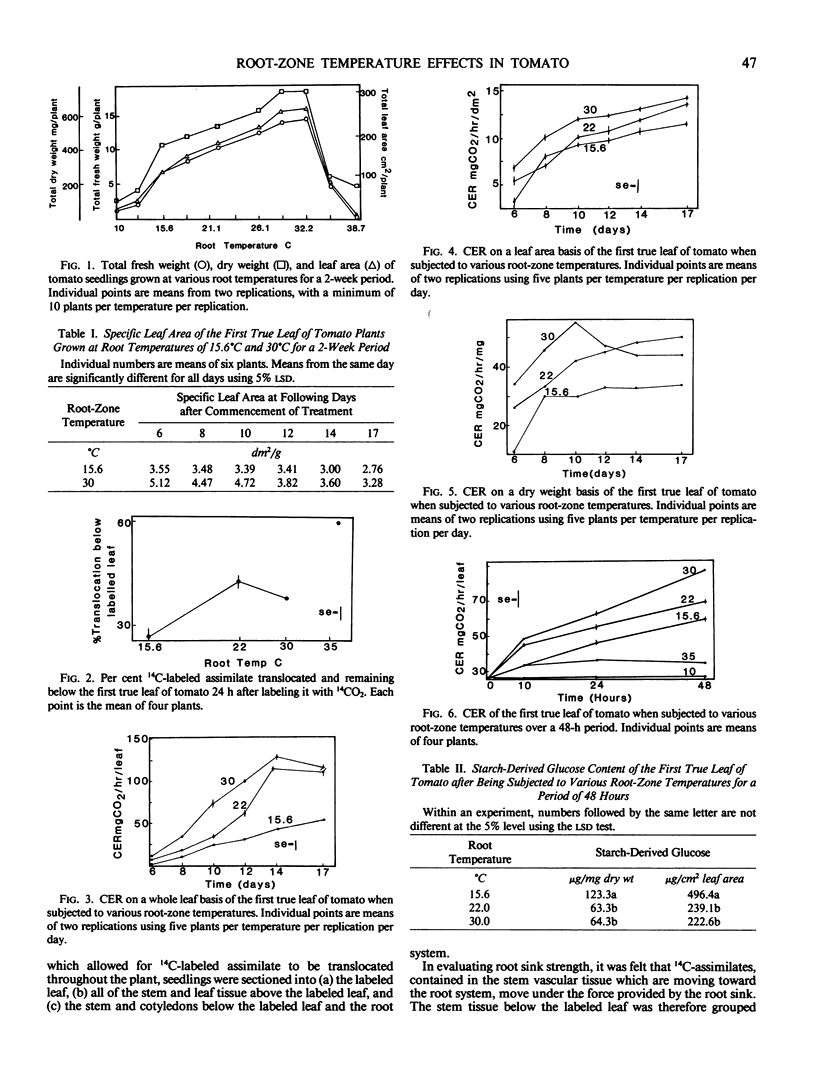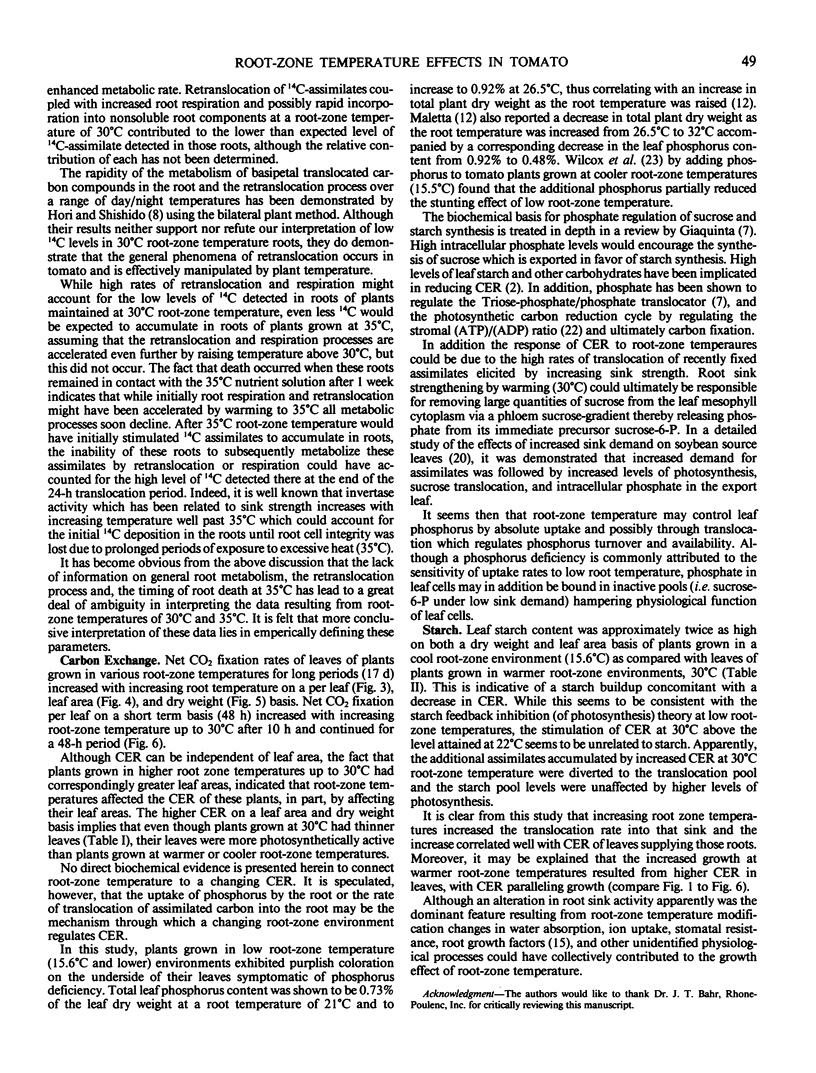Abstract
Tomato seedlings (Lycopersicon esculentum Mill. cv Vendor) were grown hydroponically with their root systems maintained at a constant temperature for a 2-week period commencing with the appearance of the first true leaf. Based on fresh and dry weight and leaf area, the optimal root-zone temperature for seedling growth was 30°C. The carbon exchange rate of the leaves was also found to increase with rising root-zone temperature up to 30°C. However, a more complex relationship seems to exist between root-zone temperature and the accumulation of 14C-labeled assimilates in the roots; inasmuch as there is no enhancement in this accumulation at the most growth promoting root-zone temperatures (22-30°C).
Full text
PDF




Selected References
These references are in PubMed. This may not be the complete list of references from this article.
- Davis R. M., Lingle J. C. Basis of shoot response to root temperature in tomato. Plant Physiol. 1961 Mar;36(2):153–162. doi: 10.1104/pp.36.2.153. [DOI] [PMC free article] [PubMed] [Google Scholar]
- Thorne J. H., Koller H. R. Influence of assimilate demand on photosynthesis, diffusive resistances, translocation, and carbohydrate levels of soybean leaves. Plant Physiol. 1974 Aug;54(2):201–207. doi: 10.1104/pp.54.2.201. [DOI] [PMC free article] [PubMed] [Google Scholar]


